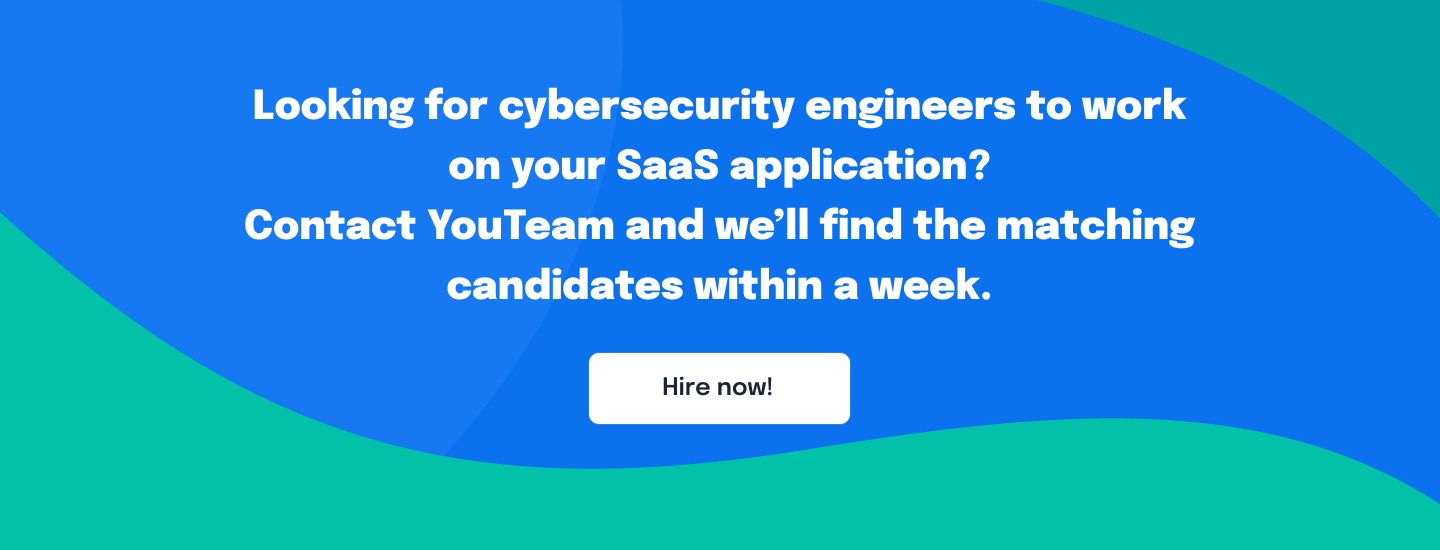When it comes to cybersecurity, organizations are under increasing pressure to safeguard their data and systems. The threat landscape is rapidly evolving; the sophistication of attacks is on the rise, and regulations like GDPR place new requirements on how firms must protect customer information.
The stakes for SaaS application security testing are high: A breach could result in financial penalties, loss of customers, or even lawsuits. This guide helps you understand what SaaS security testing is, Why it is important to protect your SaaS application, and how to conduct a security test for your SaaS application.
So, let’s dig in!
Table of Contents
What is security testing?
Security testing is the process of identifying and mitigating vulnerabilities in software applications. Security testers use a variety of techniques to probe an application for potential weaknesses, which may include: performing manual tests, running automated scans, exploiting security flaws to see how far they can be taken, and reviewing code for common coding errors that could lead to security issues.
Why is SaaS security testing important?
The purpose of security testing is to identify and mitigate risks. Security vulnerabilities can be exploited by attackers, leading to data breaches, loss of revenue, or other impacts that could damage your organization. You can avoid such harmful phenomena through continuous security monitoring practices.
Organizations are increasingly adopting cloud computing services such as Software As A Service (SaaS) to reduce costs, improve efficiency and agility, and gain a competitive advantage. For those just starting their journey into understanding the complexity of cloud services and how to secure them, getting an introduction to cloud security provides a comprehensive look at what businesses need to consider as they move more data and operations online. However, while the benefits of using cloud services are clear, there is also increased exposure to cybersecurity threats. Cloud service providers manage large pools of data from many customers, making them targets for cybercriminals.
In addition, there are security concerns specific to SaaS. If an attacker can break into a cloud provider’s systems, they may be able to access all of the data and applications used by that company in one fell swoop.
Types of security testing conducted for SaaS applications
There are many different types of security tests that you can use when assessing the security of your SaaS application. The most common types include:
- Penetration Testing
- Vulnerability Scanning
- Security Assessment
- Compliance Audit
Each type of test has its own benefits and drawbacks, so it’s important to choose the right tests for your specific needs. You should also tailor your testing strategy based on the risk level associated with your SaaS application.
For example, if you have a SaaS application that stores customers’ credit card information, you should consider penetration testing to check whether your system is secure. However, if you have an internal-facing HR management app with no sensitive data stored on it, compliance audits and vulnerability scans could be the right choice for security testing.
If I were to recommend one type of test based on our experience in conducting thousands of these assessments – Penetration tests provide the most value because they allow testers to get hands-on with your product and simulate real attack scenarios against your software using sophisticated techniques like SQL injection or XSS attacks (cross-site scripting) (these are some common types of vulnerabilities found during pen tests).
Let’s now drill down the testing types in detail.
TYPE 1: Penetration testing
It is intended to identify technical exploits and weaknesses in deployed systems or applications. These are typically automated testing tools used by external consultants who have access to source code for verification purposes, although penetration tests may also be manually performed with limited information via black-box techniques. Penetration can come from various sources, including sophisticated cybercriminals and ex-employees with system access. Implementing a thorough user access checklist, like a simple UAR checklist, is crucial for controlling system interactions, reducing vulnerabilities, and enhancing security.
Pentest phases for SaaS application
Phase 1: Pre-engagement
- Obtain an understanding of the system and its environment, including what is being tested, business functions, user roles and responsibilities, data flows, etc.
- Review any relevant documentation such as security policies, standards, and procedures related to information security.
- Identify who will be performing the testing (the client organization or a third party).
- If using a third party, ensure that they are qualified and have the necessary experience to conduct a penetration test on a SaaS application. To get started with pentesting, you need at least one machine with two network cards in it – one for attacking your target from outside (in “red team” mode), and another for monitoring traffic with Wireshark.
- Gather any other information about the system you require – it is important to be as thorough as possible here since this forms part of your test plan and will impact what happens during testing.
- Ensure that tools for pen testing are set up correctly before the engagement begins.
Phase 2: Engagement/testing phase
- At this stage, either a third party or client staff will carry out tests against SaaS applications with pre-defined targets in mind (e.g., web server) which can be achieved through various means such as exploiting known vulnerabilities, guessing default passwords etc.
- Test results should be recorded so they can provide evidence for remediation. The tester needs to decide what to do with each vulnerability they find.
- The penetration testers should provide a detailed report of any vulnerabilities discovered during testing and make recommendations for remediation.
Tools to use for pentesting SaaS applications
- Nmap: Network exploration and security auditing tool.
- Wireshark: network protocol analyzer.
- Metasploit Framework: exploit development platform.
- Burp Suite: intercepting proxy for web applications.
Steps to follow after completing the pentest
After a Pentest is complete, these are the steps that should be followed in order to fix any vulnerabilities found.
Step 1 – Assess the impact of vulnerabilities found
The first step is to assess the impact of the vulnerabilities that have been found. This will help you prioritize them in terms of risk. Critical vulnerabilities should be fixed as soon as possible, while less serious issues can be dealt with later.
Step 2 – Create a plan
After you have assessed the impact of vulnerabilities, a plan should be created in order to prioritize and tackle them. This will ensure that your application is as secure as possible.
Step 3 – Implement fixes
Once a plan has been made, it is time to implement fixes for all issues found during pentesting. There are several ways this can be done: patching software or hardware, updating applications with new versions, etc. In some cases users may need training on how to use security controls correctly if their behavior needs changing e.g., configuring accounts so they cannot be used from outside networks by attackers targeting authentication weaknesses such as brute-forcing usernames and passwords using automated tools which try different variations until they find one that works (brute force attacks).
Step 4 – Monitor and test after fixes are implemented
After the fixes have been implemented, it is important to monitor your system closely to ensure that everything is working as it should be. Additionally, pentesting should be conducted on a regular basis in order to find any new vulnerabilities that may have arisen. This will help you keep your application secure.
TYPE 2: Vulnerability scanning
It is a technique where an application is tested using one or more vulnerability scanners that report back any issues they find during their scan(s). Once vulnerabilities have been identified through scanning, they should then be verified and confirmed as exploitable.
Types of vulnerability scanning
- Manual vulnerability scanning: It can be done by penetration testers who will conduct a series of steps to find any vulnerabilities which are present.
- Automated vulnerability scanning: This is the process where automated tools are used in order to determine if there are any known or unknown issues affecting an application. These tools are usually available in SaaS format, and a good example is Intruder, an online vulnerability tool that helps you prevent data breaches without disrupting your workflow or systems.
Tools for automated vulnerability scanning
- Nessus – A vulnerability scanner that works across Windows, Mac OS X and Linux networks.
- OpenVAS – Free software implementing several network security testing techniques including Nessus-style remote checks via OpenVAS plugins.
- Retina CS Community Edition – An open-source vulnerability scanner designed specifically for web applications. It supports both authenticated (login) and unauthenticated scans as well as SSL decryption using a self-signed certificate or one installed on the target system.
- Astra Pentest – A commercial web application vulnerability scanner that can be used to test for and identify vulnerabilities in web applications.
Steps to conduct a vulnerability scanning
The steps below should be followed when conducting a vulnerability scanning of an application.
Step 1 – Identify applications to scan
The first step is to identify which applications need to be scanned. This can be done manually or using automated tools.
Step 2 – Select scanners/tools to use
Next, you will need to select scanners/tools to use for the scan. There are a variety of different scanners available, so it is important to choose the right ones for the job.
Step 3 – Configure scanners/tools
Once you have selected the scanners/tools to use, you will need to configure them correctly in order to get the most out of them. This includes setting up targets, schedules, etc.
Step 4 – Scan applications
The final step is to scan the applications using the configured scanners/tools. This will identify any vulnerabilities that may be present.
After a vulnerability has been identified, it must be verified and confirmed as exploitable before a fix can be implemented. In some cases, pentesters may need additional access privileges or permission from management in order to exploit certain vulnerabilities.
TYPE 3: Security assessment
It is a detailed examination of an organization’s security posture and the identification of specific risks and vulnerabilities, along with recommended countermeasures. Typically conducted by a third party, these assessments may be either vulnerability-based or risk-based in nature.
- Vulnerability-based security assessment: A vulnerability-based security assessment is an examination of systems and applications in order to identify any potential vulnerabilities that may exist.
- Risk-based security assessment: A risk-based security assessment is an examination of systems and applications in order to identify the risks associated with those systems/applications. It also includes the identification of countermeasures that can be taken to reduce the risk.
TYPE 4: Compliance audit
It is a review of an organization’s compliance posture against a pre-defined standard or guidelines (such as PCI DSS). The audit will typically identify any gaps in compliance and may also include penetration testing and vulnerability scanning activities.
When it comes to compliance audits for SaaS applications, there are a few specific areas that need to be considered. These include data privacy, data security, and access control.
- Data privacy: The GDPR (General Data Protection Regulation) is a regulation in the European Union in the area of data protection. It replaced the Data Protection Directive 95/46/EC and was adopted on April 14, 2018. The GDPR applies to all organizations with EU or national customers and applies to any type of data, including personal data, processing activities, and storage. Organizations that process or store the personal data of EU citizens must comply with the GDPR unless they can demonstrate that they meet certain conditions.
- Data security: As well as ensuring that personal data is properly protected, organizations must ensure the security of all their data. For example, applications that contain sensitive company information such as trade secrets or information about a business relationship with a customer may also need to be secured.
- Access control: Access controls are used to verify and authorize access requests by users, devices, or systems based on their identity before granting them appropriate permissions within an application so they can perform specific tasks. This includes things like user provisioning where new accounts are created for employees as well as password resets etc. Access control in SaaS relies heavily on managing user identities across domains. Integrating a System for Cross-domain Identity Management (SCIM) strengthens this by providing a standardized method to secure and streamline identity management in cloud environments.
How to conduct an effective security test for your SaaS application?
There is no “one size fits all” approach when it comes to conducting an effective test, so organizations need to understand what type of risk they face before choosing which tests should be performed. That said, there are some common steps most firms follow.
1) Understand your company’s requirements
Before you decide on any set of tests (and who will conduct them), you need to understand your organization’s requirements and what will be considered a success. Some firms may want the lowest price possible, while others are willing to pay more for in-depth testing that covers all their bases. You should also think about what kind of expertise you can bring in-house versus delegating tasks out to an external consulting firm or even a mix of both approaches? It is also advised that companies should keep an eye on the latest cybersecurity news.
2) Choose which tests
Once you have established your company’s risk appetite, it is time to select the type of security testing needed – from penetration tests through vulnerability scans or full assessments.
For example, when it comes to logistics software development, it is crucial to consider incorporating features. It may include real-time tracking, route optimization, inventory management, and supply chain visibility, all integrated within a user-friendly interface.
In addition, when looking at different providers, make sure they offer specific services such as cloud infrastructure support (for example Amazon Web Services ), DevOps tools, CMDB configuration management database capabilities, PaaS platform as service support, etc.
3) Identify the right provider
With so many different security testing tools and providers to choose from, it can feel overwhelming to choose one that fits your requirements. Some questions you should ask include:
- What types of services do they offer?
- How much experience does the company have in your industry sector?
- Which customers are similar to my organization?
- Do I need on-premise or cloud-based solutions?
- Will their team be assigned exclusively to me or work with other clients too?
Once you’ve found several firms which look like good matches for your firm, make sure they will provide references from existing customers who operate in a similar manner – this will help ensure compatibility between what is offered by the vendor and what best meets your needs.
Meanwhile, if you need a full-time cybersecurity engineer to join your team, YouTeam can help you hire the required specialists in a week.
4) Understand the results
Before signing a security testing contract, make sure you understand the exact services being offered and what will be produced by testing (such as reports or detailed dashboards). Also, make sure to ask about follow-up work such as remediation advice if any issues are discovered – many vendors offer this service at an additional cost.
In addition, discuss how long it should take to receive test results from different providers – some may need months of access before they can begin their analysis while others could have preliminary information within weeks depending on your requirements.
5) Plan for third party audits
Just because a security vendor says they adhere to certain industry standards doesn’t mean these claims should automatically be taken at face value. You’ll want to plan ahead to have an independent third party conduct a review of their policies and procedures to ensure they are actually living up to any claims made. This will help protect your organization from becoming the next victim – especially if you plan on publicizing test results.
6) One final tip
Always make sure that whoever conducts security testing for your SaaS application has enough experience in dealing with companies like yours – this will reduce the risks as much as possible while also improving chances of success.
Only 23 percent have a formal cloud security policy. The stakes are high: A breach could result in financial penalties, loss of customers, or even lawsuits. Organizations that take the proper precautions and adopt best practices can dramatically reduce their risks while reaping many benefits from SaaS apps.
Benefits of security testing for SaaS applications
- Reduce the risk of a breach
- Protect customer data
- Comply with industry regulations
- Maintain brand reputation
- Increase employee productivity
Summing up
The point of this article is to show you the importance of security testing with respect to protecting SaaS applications. Security can be defined as “the state or quality of being secure against danger”, which includes vulnerabilities that may lead to data breaches and loss. If your business stores sensitive information on a third-party server, then it needs protection from cyberattacks – no matter how small they seem. The best way for you to protect your business in this ever-changing digital landscape is by hiring a professional team of security testers who can identify and address these weaknesses before any damage takes place. YouTeam can help you find the required specialists in a week.







